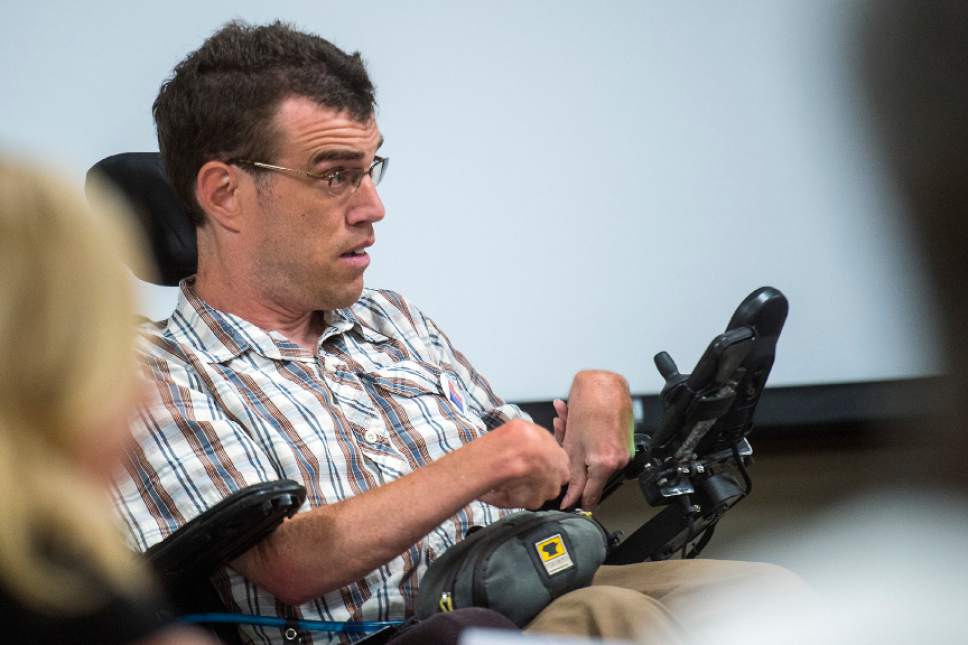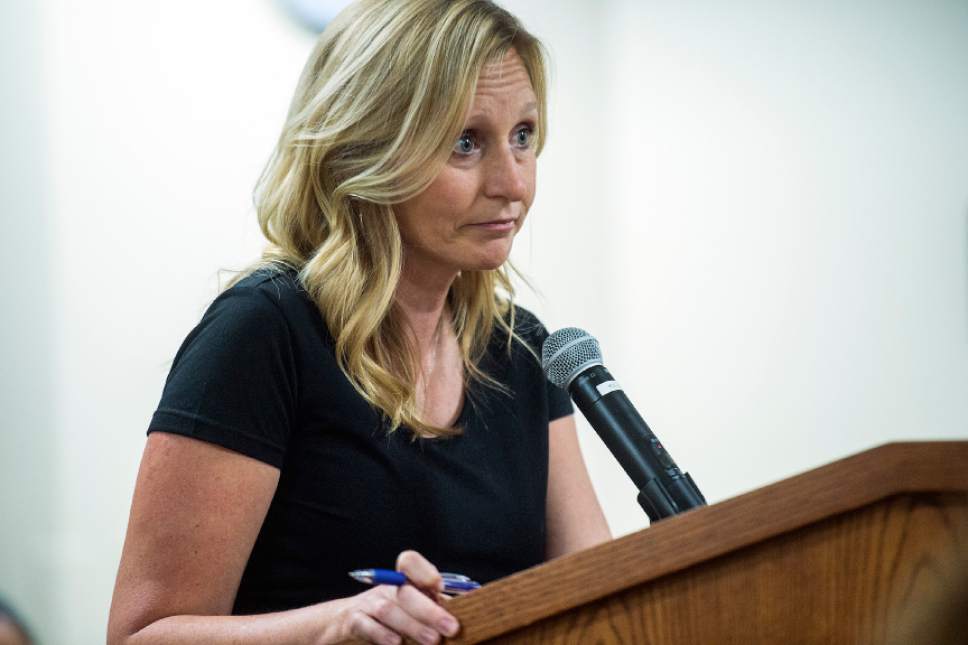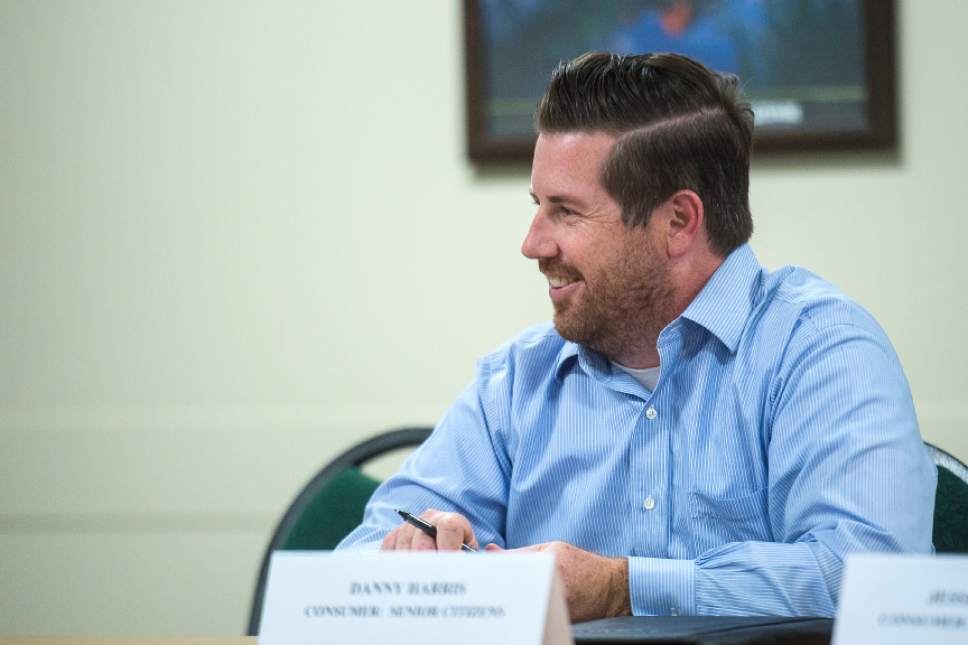This is an archived article that was published on sltrib.com in 2017, and information in the article may be outdated. It is provided only for personal research purposes and may not be reprinted.
With all eyes on Washington as Senate Republicans revealed their health care bill, few Utahns weighed in on their state's request that its Medicaid expansion be tied to lifetime coverage limits and work requirements.
A Thursday public input session before the state's Medical Care Advisory Committee drew only three public comments, and when attendees were invited to take the seats of the 10 absent committee members so that they could better hear the discussion, there were still empty spots at the table.
"Unfortunately, the attention of the public has been shifted a little bit to the federal side, but this is really critical to Utahns," said Stacy Stanford, a disability rights activist who was among the speakers. "Underprivileged Utahns are going to be impacted by federal legislation, yes, but they're also going to be impacted by what happens in this room."
Utah's proposed expansion would cover about 6,000 of its most needy childless adults — those who are chronically homeless or in need of mental health or drug addiction treatment.
The state's proposed changes to its plan include:
• A cap on enrollees in the new categories at 25,000.
• A 60-month lifetime limit on coverage under Medicaid and the state's Primary Care Network for those new enrollees.
• A requirement that beneficiaries of the Primary Care Network, a Utah program that offers fewer benefits than Medicaid, either work 30 or more hours per week, seek employment or participate in training unless they qualify for a half-dozen exemptions. The requirement has "the potential to be expanded" to Medicaid recipients "at a later date."
• A $25 copayment for non-emergency visits by a Medicaid beneficiary to an emergency room.
• A limit on Medicaid coverage to the first day in the month that it was applied for, as opposed to the 90-day retroactive coverage Medicaid provides current beneficiaries.
Stanford spoke out against what she termed "cruel and arbitrary" lifetime limits and the work requirement.
She didn't meet the state's definition of disability after developing a neurological condition that resulted from a car accident, she said, even though she used a wheelchair part time for six years and "spent a great deal of time bedridden and sick with debilitating symptoms." Many in the health coverage gap are likewise far from "able-bodied," she said.
"How does the State of Utah expect to accommodate those who are too disabled to work, yet still unable to qualify for Medicaid?" she asked. "We can look at other states and see that work requirements are ineffective. A majority of people on Medicaid are already employed. The rest are caregivers, students, or like I pointed out, they are too disabled to work. How will Utah avoid penalizing these sick people?"
The committee's discussion continued for about two hours after the comments concluded, with members quizzing Health Department Deputy Director Nate Checketts about changes to the state's plan.
Board Chairman Andrew Riggle, a consumer representative for individuals with disabilities, echoed Stanford's sentiment. Riggle said he knows Medicaid recipients who work 15 to 25 hours a week, combined with "everything else they have to do to get by."
"Is there any way to incentivize [working 30 hours or more] rather than penalize somebody who's already working a significant number of hours?" he asked.
Committee members asked Checketts to provide some clarifications, including: whether the state is considering special exemptions to the 25,000 cap (yes), whether the ER copay could be tiered so that a first use was less costly (no, for logistical reasons), and what the expected savings are from ending retroactive coverage (unknown).
Danny Harris, an advocacy director for AARP, wondered if it was an "unreasonable expectation" to ask chronically homeless people and those with mental or substance abuse disorders to apply before they need treatment.
Harris said afterward that he and other committee members needed more time to crystallize their thoughts, given that the revisions were only released Monday.
Another public meeting is scheduled from 3 p.m. to 5 p.m. July 10 at Room 125 of the Cannon Health Building, 288 N. 1460 West, Salt Lake City.
"Those who came today, the majority were people who have been long involved in these programs," said Checketts. "Many of them have talked to me about these concerns before, and this was a chance for them to come back and reiterate those concerns."
Comments may also be sent through an online portal, health.utah.gov, or mailed to Jennifer Meyer-Smart, Utah Department of Medicaid and Health Financing, P.O. Box 143101 Salt Lake City, Utah 84114-3101.
Rep. Jim Dunnigan, R-Taylorsville, who sponsored the state legislation calling for the expansion, said earlier this week that the new requests were submitted after Donald Trump's administration asked that state officials simply spell out what they wanted — including items like the work requirement that Dunnigan said had previously been rejected by the Centers for Medicare and Medicaid Services under President Barack Obama.
Dunnigan and Checketts have said it's a "realistic" goal to begin enrolling targeted childless adults Jan. 1, 2018.
State officials expect to begin enrolling between 3,000 to 5,000 low-income parents in a separate, already approved plan on July 1. About 2,500 of those parents are currently on the Primary Care Network plan and have already been identified for a shift to the more comprehensive Medicaid.
Twitter: @matthew_piper













